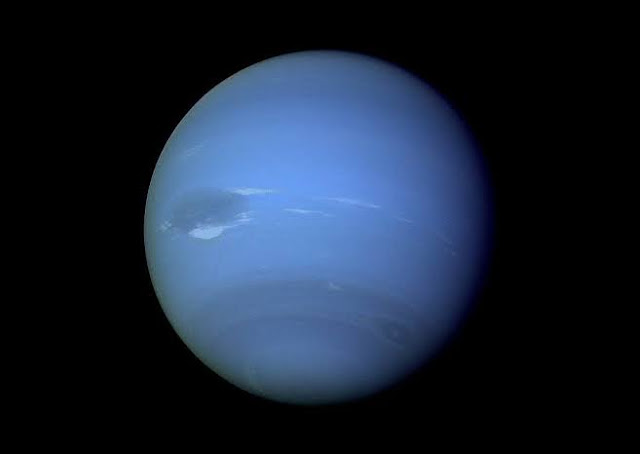Uranus is the seventh planet from the Sun. It is not visible to the naked eye, and it became the first planet discovered with the use of a telescope. Uranus turns sideways with an axial inclination of 98 degrees. It is often described as "rolling around the Sun sideways."
 |
| Planet: Uranus. |
Uranus Planet Profile
| Equatorial Diameter: | 51,118 km |
| Polar Diameter: | 49,946 km |
| Mass: | 8.68 × 10^25 kg (15 Earths) |
| Moons: | 27 (Miranda , Titania , Ariel, Umbriel & Oberon) |
| Rings: | 13 |
| Orbit Distance: | 2,870,658,186 km (19.19 AU) |
| Orbit Period: | 30,687 days (84.0 years) |
| Effective Temperature: | -216 °C |
| Discovery Date: | March 13th 1781 |
| Discovered By: | William Herschel |
Here Are Some Incredible Scientific Facts About Uranus
- • Uranus was officially discovered by Sir William Herschel in 1781.
- It is too dim to have been seen by the ancients. At first, Herschel thought it was a comet, but several years later it was confirmed as a planet. Herscal tried to have his discovery called "Georgian Sidus" after King George III. The name of Uranus was suggested by astronomer Johann Bode. The name comes from the ancient Greek deity Ouranos.
- • Uranus spins on its axis once every 17 hours, 14 minutes.
- • The planet rotates in a retrograde direction, opposite to the way Earth and most other planets rotate.
- • Uranus travels around the Sun every 84 Earth years.
- During some parts of its orbit, one or the other of its poles point directly to the Sun and receive about 42 years of direct sunlight. The rest of the time they are in the dark.
- • Uranus is often referred to as an "ice giant" planet.
- Like the other gas giants, it has a top layer of hydrogen, which has mixed helium. Below is an "icy mantle," which surrounds a core of rock and ice. The upper atmosphere is made of water, ammonia and methane ice crystals that give the planet its pale blue color.
- • Uranus reaches the coldest temperatures of any planet.
- With a minimum atmospheric temperature of -224 ° C, Uranus is the coldest planet in the solar system. While Neptune is not as cold as Uranus, on average it is colder. The upper atmosphere of Uranus is covered by a mist of methane that conceals the storms that take place on cloud covers.
- • Uranus has two sets of very fine dark rings.
- The ring particles are small, ranging from dust-sized particles to small rocks. There are eleven inner rings and two outer rings. They probably formed when one or more of Uranus' moons broke into an impact. The first rings were discovered in 1977 and the two outer rings were discovered in images from the Hubble Space Telescope between 2003 and 2005.
- • The moons of Uranus are named after the characters created by William Shakespeare and Alexander Pope.
- These include Oberon, Titania and Miranda. All are frozen worlds with dark surfaces. Some are mixtures of ice and rock. The most interesting moon of Urania is Miranda; It has ice cannons, terraces and other strange surfaces.
- • Only one spacecraft has flown through Uranus.
- In 1986, the Voyager 2 spacecraft passed through the planet at a distance of 81,500 km. He returned the first foreground images of the planet, its moons and rings.
Comments
Post a Comment